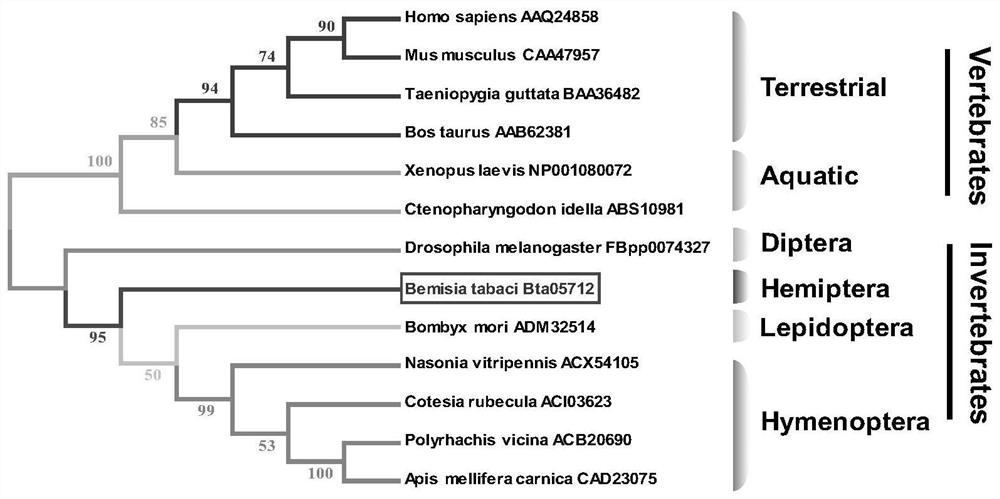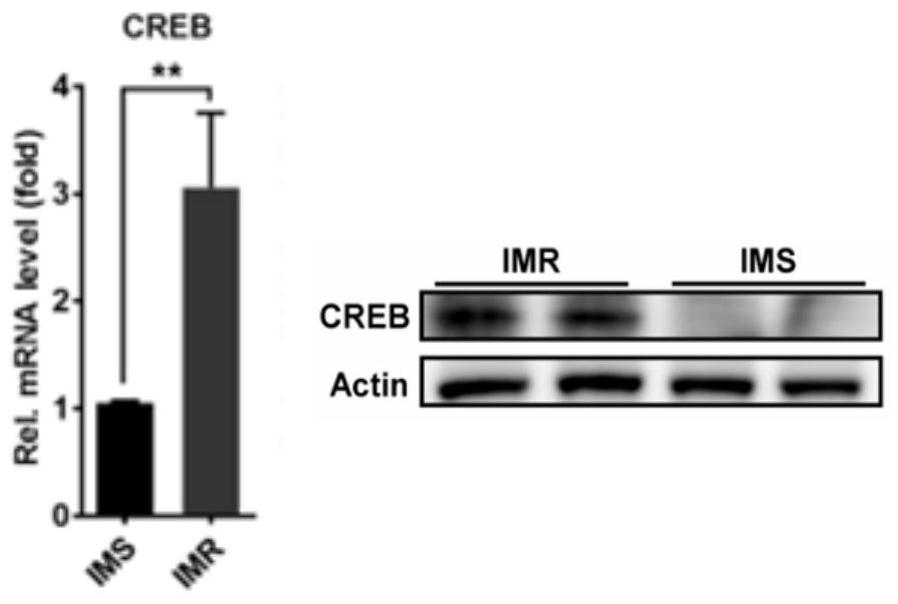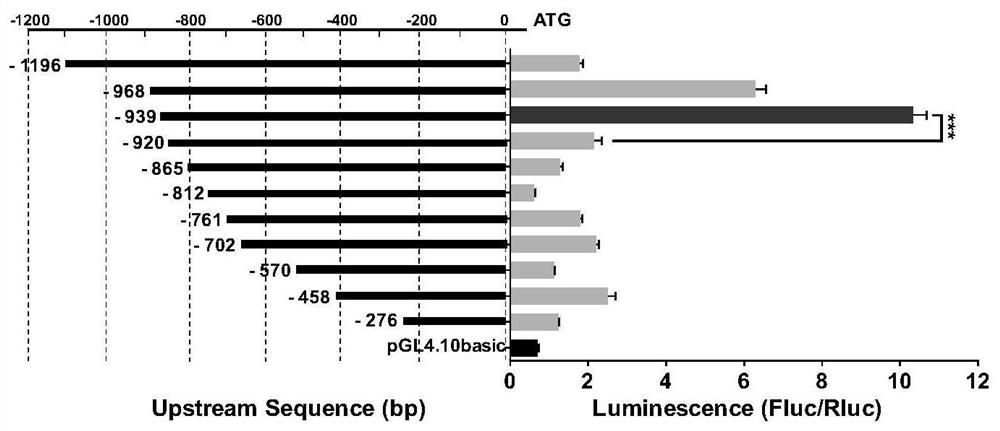Bemisia tabaci creb transcription factor and method for detecting resistance or sensitivity of bemisia tabaci to imidacloprid
A technology for Bemisia tabaci and imidacloprid, which is applied in the biological field and achieves the effects of accurate detection results and fast method operation.
- Summary
- Abstract
- Description
- Claims
- Application Information
AI Technical Summary
Problems solved by technology
Method used
Image
Examples
Embodiment 1
[0030] Embodiment 1. CREB Gene full-length verification
[0031] Based on B. tabaci genome annotation information and transcriptome annotation, primer clones were designed CREB Gene sequences, primer sequences are shown in SEQ ID NO: 3 and SEQ ID NO: 4 (F: ATGGACGGGATGGTGGAGG; R: TCAATCTGTTTTTTGCTGGCAATAGAGC), compare the amino acid sequence differences and phylogeny of imidacloprid resistant strains after translation, and use genomic DNA information to carry out Gene structure analysis, clear CREB Characterization of genes in Bemisia tabaci.
[0032] The results showed that the CREB gene of B. tabaci had a full length of 849 bases (the sequence is shown in SEQ ID NO: 1), encoding 282 amino acids (the amino acid sequence is shown in SEQ ID NO: 2), and at the end there is a CREB family gene. A typical characteristic DNA-binding region (leucine zipper structure), further phylogenetic tree analysis showed that the gene belongs to a typical CREB family (such as figure 1 )....
Embodiment 2
[0034] (1) In allergy-resistant strains CERB Gene transcription level expression detection
[0035] design CREB Gene fluorescence quantitative PCR primers (F-ACTCAAGGCAGTCTCCAAACCC; RTTTCTGCTCCGCCTAAATCGTT) (amplification efficiency 99%) were used to detect the expression level of the adult worms of the resistant strains at the transcriptional level, and to compare and analyze the differences between the resistant and sensitive strains. Extracting RNA samples of two groups of adult worms, then reverse transcribing them into cDNA templates, and performing the reaction in a fluorescence quantitative PCR reaction system including the specific primers described in step 1;
[0036] (1) The extraction steps of B. tabaci adult RNA are as follows:
[0037] ①Take 30 adults of Bemisia tabaci from the sensitive and resistant populations, and freeze them in liquid nitrogen for future use;
[0038] ②Put the adult worms into a glass homogenizer, and add 1 ml of Trizol reagent to the ho...
Embodiment 3
[0071] Embodiment 3. Dual-luciferase reporter gene detection system
[0072] Analysis in Drosophila S2 cells using the Dual-Luciferase® Reporter Assay System, # E1980, Promega CYP6CM1 The upstream promoter sequence of the gene (the sequence is shown in SEQ ID NO: 5), and the transcription factor protein was overexpressed in S2 cells, and the transcription factor pair was analyzed. CYP6CM1 Activation and regulation of upstream regions of genes.
[0073] The Drosophila S2 cell line was donated to the laboratory of Chen Dahua, Institute of Zoology, Chinese Academy of Sciences. S2 cells were cultured in large petri dishes with a diameter of 15 cm in HyClone SFX medium in a CO-free medium 2 in a constant temperature incubator at 27°C.
[0074] S2 cells were transfected with liposome Lipofectamine 2000 (1ug / uL). Before transfection, cells with good growth status were taken, and the density reached 1.5~2.0×10 after dilution. 6 One, pipette an appropriate amount into the cell cu...
PUM
 Login to View More
Login to View More Abstract
Description
Claims
Application Information
 Login to View More
Login to View More - R&D
- Intellectual Property
- Life Sciences
- Materials
- Tech Scout
- Unparalleled Data Quality
- Higher Quality Content
- 60% Fewer Hallucinations
Browse by: Latest US Patents, China's latest patents, Technical Efficacy Thesaurus, Application Domain, Technology Topic, Popular Technical Reports.
© 2025 PatSnap. All rights reserved.Legal|Privacy policy|Modern Slavery Act Transparency Statement|Sitemap|About US| Contact US: help@patsnap.com



